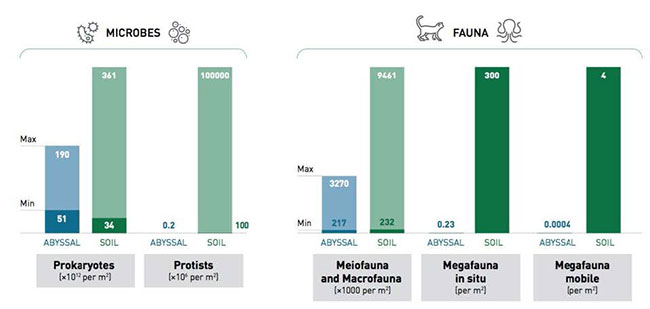
Editor, I am writing about the letter from the Civil Society Forum of Tonga to your office on February 25 responding to your article on February 22, “Seabed mining environmental study underway”.
The debate over whether or not to turn to the deep sea to secure the resources we need for a low-carbon future has generated much public interest, but it is critical that this debate is founded upon sound science and the best data currently available. As such, I would like to correct a number of misrepresentations from their letter.
“No need for deep-sea mining”
It is true that there are enough metal-bearing deposits on land to meet the needs of the clean energy transition. But at what cost?
Miners seeking to access and develop these deposits must contend with falling ore grades which mean we must dig deeper expending more energy to produce the same amount of metal. These fundamental challenges are having a material impact on our ability to supply these critical metals and as supply slows, our action on climate stutters.
Across a basket of critical metals for clean energy technologies, academic studies have forecast significant supply deficits in the coming decades and for metals like nickel and copper, analysts have predicted shortfalls for each of around 40% (McKinsey) and 35% (Wood Mackenzie) respectively by 2025.
Currently, all metal mining occurs on land and on a planet where 71% is ocean, the question that we should be asking is whether the ever-increasing environmental impact, particularly in those highly biodiverse regions in which a large proportion of battery metal production is located is justified when there are other options such as the deep sea that forms the largest ecosystem on the planet.
Contrary to the letter’s claims, collecting nodules is fundamentally different and bears little relation to conventional metal production. In the deep-sea, nodules contain rich concentrations of four base metals and can be simply collected without the need to drill or blast hard country rock as on land, allowing the precious carbon-rich ecosystems and topsoil which act as massive carbon sinks to be preserved. And because nodules contain no toxic levels of heavy elements, they can be processed with near zero solid waste and no toxic tailings. Producing metal without solid waste is a huge paradigm shift for an industry that generated 189 billion tonnes of waste in 2020 – the planet’s single largest waste stream.
While recycling is an important part of transitioning to a sustainable economy, it is not yet a viable alternative to mining as there simply isn’t enough available material to recycle. We can’t recycle what we don’t have. By 2050, even if we recycled every single gram of nickel – the most prominent metal in an electric vehicle battery – we would only reduce demand for new nickel by 23%, according to the World Bank.
It is also important to remember that the urgent and necessary transition to clean energy is but one driver of metal demand and that the material requirements of an additional 3 billion people and rising living standards in the developing world cannot simply be compressed.
The issue often gets framed as should we or shouldn’t we turn to the deep sea? Unfortunately, that’s not the question ahead of us. Whether we like it or not, the global transition to clean energy – which environmental NGOs all agree is urgently needed – will require a mountain of metal and that metal will have to come from somewhere.
The question environmentalists should be asking is, what source would cause the least damage to the planet and its people? We see polymetallic nodules as offering a rare opportunity to dramatically reduce most – but not all – of the environmental and social impacts of terrestrial mining.
On deep-sea mining as “a relic”
A lot of environmental and social damage has been caused by extractive industries on land and if we are to have any chance of a cleaner, fairer future we cannot repeat the mistakes of the past.
For the first time in history, a world-class regulatory regime will be put in place before a new extractive industry begins, one which has been negotiated by the international community, and which will prioritize the protection of the marine environment.
As a two-dimensional resource spread thinly over a wide area, nodules allow us to rewrite the rules in how we mitigate our impacts. Modern technology is allowing us to develop an Adaptive Management System to monitor and adjust our operations in near real-time, enabling us to go around ecologically sensitive areas and even monitor currents and slow down our collectors to limit the travel of sediment outside of our operating areas.
Remote though they may be, it is important that these global commons are not out of sight or out of mind and our system will provide the regulator and stakeholders with a live view of our operations anywhere in the world, something that cannot be said for current terrestrial mines.
Abyssal plains as an ecological desert
Turning to the deep sea has numerous benefits. It is important to remember that 97% of the life on our planet lives on land. The abyssal CCZ where the nodules we are exploring for are found is a lowenergy, food-poor environment and is one of the least productive areas of the ocean with one of the lowest biomass areas on the planet.
So, while we cannot collect nodules with zero impacts, we will impact far fewer organisms. As a Common Heritage resource, however, this does not mean we can be complacent. To protect the life that does exist in these environments, the International Seabed Authority has already set aside more areas for protection (1.44 million km2) than is under exploration (1.1 million km2) and contractors will set aside additional protected areas within their exploration areas. Lastly, we will not collect all the nodules, but will leave behind 15% of the nodules at the seafloor to aid habitat recovery.

Contrary to the letter’s claims, collecting nodules will not result in irreversible damages to the ecosystem on the seafloor and recovery from the impacts that do occur can start naturally and begin immediately after the collector moves on.
Since the 1970s, 11 seafloor disturbance and commercial mining studies have been conducted and sites revisited over 26-year time periods. Based upon review studies of research to date we know that: mobile and pelagic fauna recover within one year (Jones et al. 2017); and that microbial density and diversity – which accounts for around 80% of the life impacted by collecting nodules – can be expected to fully recover in around 50 years (Vonnahme et al. 2010). Compare that to an Indonesian nickel laterite mine: the rainforest habitat is destroyed; most of the contained organic carbon is released and most of the bacteria in the soil dies (Block et al. 2020). On land, recovery can only begin at the end of a mine’s life which last anywhere between 20-100 years, and where the recovery to pre-mining biodiversity and function may take as long as 4,000 years assuming no further impact (Haynes 2014).
On “waste streams”
As they collect the nodules, our vehicles will entrain the top 5cm to 10 cm of the sediment, the majority of which will be discharged at the seafloor. Recent in situ experiments and modelling show that 90% of these particles will settle quickly within hundreds of metres to 1-4kms from origin. A small percentage of sediment will enter our riser pipe along with the nodules we have collected and this material stream – which is almost entirely made up of seawater – will then be returned to the ocean at depths deemed optimal through extensive scientific research. Early studies show sediment concentrations dilute extremely quickly but we will continue to support scientific studies and research on this as part of our collaborative deep-sea science program in partnership with some of the world’s leading ocean scientists, and we look forward to publishing our results in the near future.
In closing, we encourage people to consider the environmental and social challenges we face as we transition to a clean energy future and think about how we can make that transition with the lightest possible impact. We believe that when you take a planetary perspective, the advantages of turning to the deep sea become clear.
Please feel free to come by to speak with me about this issue.
Respectfully,
Christina Pome’e
Tonga Country Manager
Tonga Offshore Mining Limited



